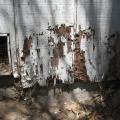5 Tips for Protecting Shrubs from Winter Damage
Our outdoor plants, particularly delicate shrubs, can suffer during the cold months. Nevertheless, provided certain preventive measures are taken, it is possible to help your shrubs survive the winter period and bloom as healthy and attractive plants once spring arrives.
In this tutorial, we will discuss five clever ways of protecting your bushes from cold-related effects and enabling them to flourish throughout the seasons.
Common Types of Winter Damage
Winter can cause extensive harm to plants in many ways, such as frost damage, desiccation, and accumulation of heavy snow or ice. Frost damage happens when intracellular water crystallises, causing cellular membranes to shatter and culminating in the wilting or browning of foliage.
Desiccation occurs when vegetation loses moisture via foliage more rapidly than it can be replenished from the earth, engendering dehydration and subsequent wilting. Additionally, the weight of heavy snow or ice can impose substantial weight on branches, leading them to snap or bow under immense strain.
Factors Escalating Winter Damage Risk
There are different factors that can increase the chances of shrubs being damaged in winter, such as strong winds, alternating temperatures and lack of enough protection by mulch or snow.
Shrubbery planted in open areas or those grown on poorly drained land are especially at risk of damage during this period. Moreover, newly uprooted shrubs or those affected by lack of water are likely to be harmed in cold seasons.
Properly Mulch Your Shrubs
Mulching stands as a paramount strategy for safeguarding shrubs against winter's harshness. Insulation provided by a mulch layer acts as a shield against temperature swings and frost. It keeps the soil moist, ensuring that shrub roots remain adequately hydrated throughout the winter season.
Beyond these benefits, mulch reduces weed proliferation and enhances soil structure as it gradually decomposes, enriching the earth.
How to Mulch Shrubs Correctly
Commence the mulching of your shrubs by meticulously eliminating any preexisting mulch or detritus surrounding the plant bases. Subsequently, put a layer of organic mulch, such as fragmented bark, wood chips, or straw - ensuring a depth of 2-4 inches.
It is crucial to maintain a slight gap between the mulch and the shrub's base to avoid decay or malady. Augment the mulch as necessary throughout the colder months to ensure sufficient insulation and moisture conservation.
Importance of Winter Hydration
Although it might appear paradoxical, shrubs necessitate hydration during the winter months, particularly evergreens and newly planted varieties. Fanned by winter winds and dry air, the capacity of plants to hold moisture is greatly reduced, thus causing their dehydration, resulting in what is termed winter burn. Providing water to your shrubs during dry spells can avert desiccation and ensure they remain robust and hydrated throughout the colder season.
How to Water Shrubs in Winter
In the realm of watering shrubs during the winter months, it becomes imperative to engage in this practice amidst the peak of daytime warmth, thereby mitigating the peril of freezing.
Employ a soaker hose or a drip irrigation system to moisten the ground around the shrub's foundation, meticulously evading any contact with the verdant foliage.
Establish a regimen of watering sessions, permitting the earth to undergo a modest desiccation between each bout of hydration. Be sure to water only when the ground is not frozen, thus averting harm to the intricate root system.
Shield Your Shrubs from Harsh Winds
Winter's harsh gusts possess the ability to deplete moisture from the verdant canopy of shrubs, inducing desiccation, a state commonly recognised as windburn. This phenomenon predominantly impacts the side of the shrub that confronts the prevailing winds, leading to dried, browned, or curled leaves. Windburn's influence extends beyond mere aesthetic alterations, as it weakens shrubs, leaving them more prone to other types of winter-related damage.
Techniques for Wind Protection
To safeguard your shrubs against windburn, consider the installation of windbreaks such as fences, hedgerows, or temporary burlap screens. Alternatively, you may build a barrier utilising stakes and burlap or frost cloth to fortify susceptible shrubs against the onslaught of harsh winds.
Position these windbreaks on the windward side of the shrub, maintaining a space to facilitate air circulation and stave off excessive heat or fungal proliferation.
Prune Your Shrubs at the Right Time
Tree surgery and pruning serve as a crucial aspect of upholding the well-being and structure of shrubs throughout every season. During the winter period, prioritise the elimination of deceased, diseased, or impaired branches to enhance air circulation and minimise the risk of fungal infestations. Refrain from undertaking pruning in the latter part of winter or the early phase of spring, as such actions could stimulate fresh growth susceptible to harm from belated frosts.
Best Practices for Winter Pruning
Engaging in the art of winter pruning necessitates the employment of sharp, sterilised pruning instruments to execute precise incisions just above a bud or lateral shoot.
Remove any crossing/rubbing branches, as well as those growing inward or downward. Periodically retreat to appraise your progress, ensuring the realisation of the desired form and framework for the shrub.
Build Protective Barriers
For the most at-risk shrubs, it is advisable that you make a protective barrier by using either covers or wraps. This act of putting either burlap cloth or frost covers on shrubs enables maintenance of their temperatures at moderate levels as well as mitigating the risk of frost damage. Additionally, wrapping shrubs with twine or burlap offers protection from the burden of heavy snow or ice accumulation.
DIY Methods for Winter Protection
There are various do-it-yourself ways of safeguarding shrubs against cold-season distress. What you need to do is make a simple frame with stakes and chicken wire or hardware cloth in order to hold a protective cover.
Alternatively, you can throw old bedsheets or blankets over it and stake the fabric in place or weigh down the edges with a few rocks.
Conclusion
With diligent care and attention, you can help your shrubs endure the winter months and flourish in the spring. Follow these five essential tips for protecting your shrubs from winter damage to keep your landscape beautiful and resilient throughout the year.
So take the time to mulch, water, shield, prune, and build protective barriers around your shrubs this winter, and enjoy the rewards of a thriving garden in springtime.
More to Read:
Previous Posts:








